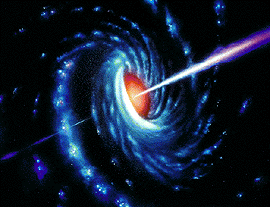 Recently, I came across two books that cast significant
aspersions on the entire notion of string theory: Not Even Wrong: The Failure
of String Theory and the Search for Unity in Physical Law by Peter Woit and
The Trouble With Physics: The Rise of
String Theory, The Fall of a Science, and What Comes Next by Lee Smolin.
Recently, I came across two books that cast significant
aspersions on the entire notion of string theory: Not Even Wrong: The Failure
of String Theory and the Search for Unity in Physical Law by Peter Woit and
The Trouble With Physics: The Rise of
String Theory, The Fall of a Science, and What Comes Next by Lee Smolin. First of all, have you ever noticed how scientific works have
such long titles? It’s like they’re trying to summarize the book in the title.
What’s wrong with a tight, pithy title like Absurdities
of String Theory or Cutting the
Strings? Why these obsessive run-on sentences trying to squeeze onto book
covers? Have you ever seen a really obese individual dressed in spandex or some
other stretchy material? Scientific titles must be a real headache for cover
artists.
First of all, have you ever noticed how scientific works have
such long titles? It’s like they’re trying to summarize the book in the title.
What’s wrong with a tight, pithy title like Absurdities
of String Theory or Cutting the
Strings? Why these obsessive run-on sentences trying to squeeze onto book
covers? Have you ever seen a really obese individual dressed in spandex or some
other stretchy material? Scientific titles must be a real headache for cover
artists. Now, I may have left you with the impression that I have actually read the two books I mentioned. In fact, I wouldn't mind if you had
that impression. It might cause you to think I was very intelligent and widely
read on matters of physics. If you’ll notice, however, I wrote that I “came
across” these books. More specifically, I read about them on Amazon.com. So, while the following might give you the
notion I understand it, I’m simply parroting comments from reviewers.
Now, I may have left you with the impression that I have actually read the two books I mentioned. In fact, I wouldn't mind if you had
that impression. It might cause you to think I was very intelligent and widely
read on matters of physics. If you’ll notice, however, I wrote that I “came
across” these books. More specifically, I read about them on Amazon.com. So, while the following might give you the
notion I understand it, I’m simply parroting comments from reviewers.
In his book, Woit makes the case that superstring theory is
not just far-fetched, it doesn’t even really have the substance to be described
as a theory. Since it makes no testable predictions, it cannot be proven, or, more
importantly, proven wrong. Essentially, this makes superstring theory
unchallengeable, so it survives and flourishes without being subject to the
scientific method.
Smolin, for his part, posits that much research in physics—the
search for the laws of nature—has entered the realm of the imaginary with its
dimensionless sub-atomic particles and multiple parallel universes. A lapsed
string theorist himself, Smolin laments that many of the best and brightest new
talent among physicists today are being drawn toward this mystical realm.
A RELEVANT ALLEGORICAL VIDEO
And, just when I’m beginning to think it may be safe to go
back into the waters of general and special relativity, I see this teaser on my home page from
the BBC news service: “Test ‘breaks light speed again.’” The article describes
experiments conducted at CERN, the European Laboratory for Particle Physics in Geneva ,
Switzerland Italy 450 miles
away. The Geneva 186,282 miles per hour, is an absolute limit and that nothing can move faster. (NOTE: These results were later retracted due to experiment errors attributed to faults in equipment handling.)
What's more, I was reading a brief history of the neutrino on a website by the University of California, Irvine, and the synopsis reflects a very similar inception to that of string theory. It gave me pause.
I was starting to like that the idea of string theory, and
possibly other conjectures of quantum mechanics, were just so much magical
thinking. My mind began to erase branes, multiple universes and extra
dimensions from its working chalkboard. The world began to make sense again.
I’ll bet it was the French. They’re always trying to upset
the apple cart.
[?]
[?]




































